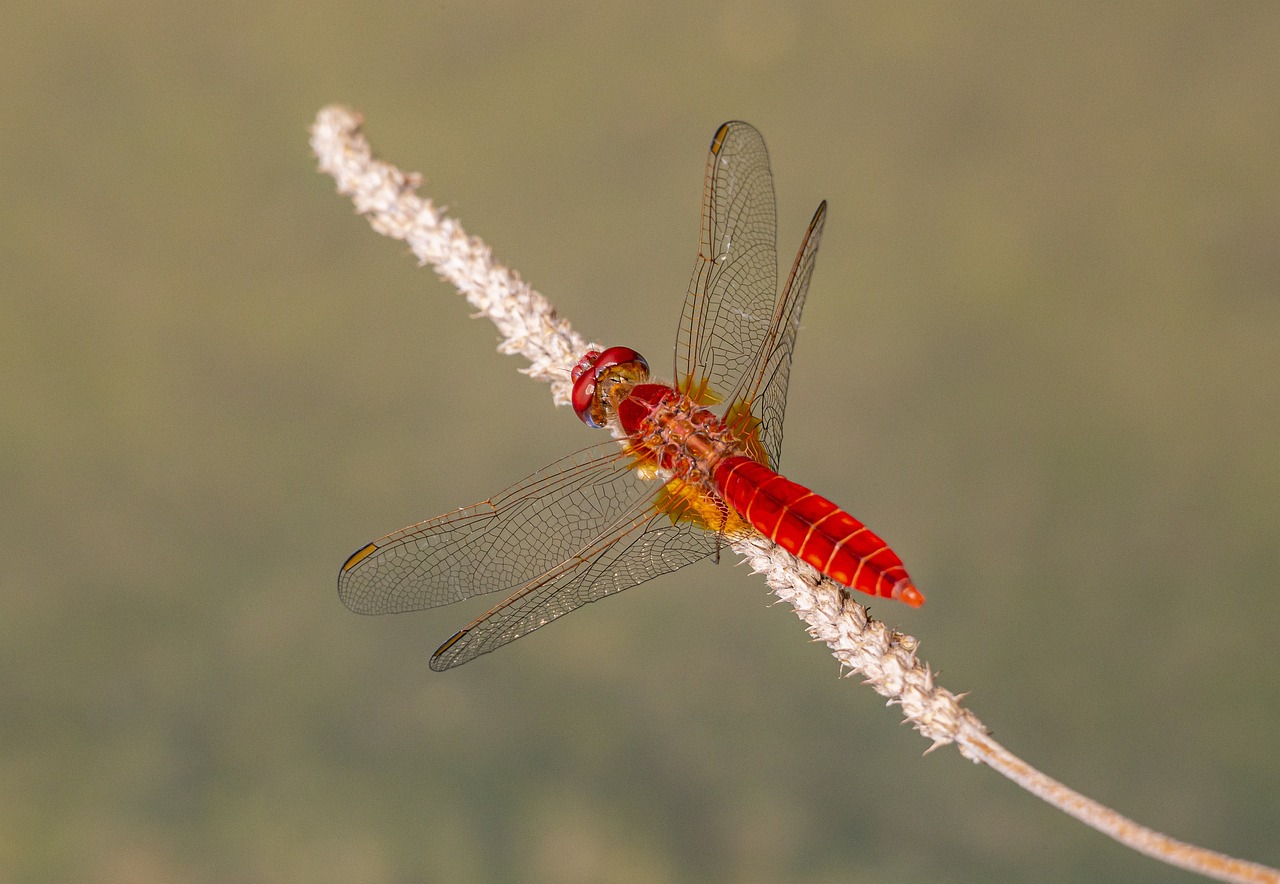The Red-veined Darter (Sympetrum fonscolombii) is a striking species of dragonfly belonging to the family Libellulidae. Here’s a detailed description:
- Appearance: The Red-veined Darter is a medium-sized dragonfly with a length ranging from 35 to 40 millimeters. It has a slender body and long, narrow wings. Adult males typically have a bright red or orange abdomen, while females and immature individuals may exhibit a more yellowish or brownish coloration. Both sexes have distinctive red veins running along the wings, giving the species its name.
- Habitat: Red-veined Darters are commonly found in a variety of habitats, including ponds, lakes, marshes, and slow-moving rivers. They prefer areas with open water and emergent vegetation, where they can perch and hunt for prey.
- Range: This species is native to parts of Europe, North Africa, and the Middle East. It has a relatively wide distribution within its range and can be found in suitable habitats across various countries.
- Behavior: Red-veined Darters are active fliers, often seen darting around their habitat or perching on vegetation near the water’s edge. They are skilled hunters, preying on small insects such as flies, mosquitoes, and other flying insects. Males are territorial and will defend their territory from intruding males.
- Reproduction: Like other dragonflies, the Red-veined Darter undergoes a complex life cycle that includes egg-laying in water, followed by larval development and emergence as adults. Mating typically occurs near water bodies, where females lay their eggs in aquatic vegetation or directly in the water.
- Conservation: While the Red-veined Darter is not considered globally threatened, it may face localized threats due to habitat loss, pollution, and changes in land use. Conservation efforts aimed at preserving freshwater habitats and maintaining water quality can benefit not only the Red-veined Darter but also other aquatic species.
The Red-veined Darter is appreciated by enthusiasts and researchers for its beauty, behavior, and ecological importance as a predator in freshwater ecosystems. Understanding its habitat requirements and conservation needs is essential for ensuring its long-term survival.
Visited 841 times, 3 visit(s) today
Views: 1135
Subscribe to the newsletter:
